Overview: In today’s world, it’s vital to include STEM in your homeschool studies. This sounds intimidating, but it doesn’t have to be. Here are some tips!
Want to know how to help support your child’s STEM education without being an expert yourself?
STEM education refers to the teaching and learning of science, technology, engineering, and mathematics. It aims to provide students with the skills and knowledge needed to solve real-world problems and pursue careers in STEM fields.
The goal is not only to teach students about specific STEM subjects, but also to help them develop critical thinking skills, problem-solving abilities, and creativity.

By encouraging students to explore and experiment with STEM concepts, STEM education aims to inspire a lifelong love of learning and prepare students for success in a rapidly changing world.
Educational toys have become increasingly popular in recent years, and for good reason. They offer many benefits for children of all ages and are a wonderful way to help kids develop many unique skills.
Here are 10 Ways Kids Benefit from Using STEM Toys:
1 – Enhance problem-solving skills
STEM toys encourage children to think critically and develop their problem-solving skills as they work through challenges and experiments. These toys often require children to apply logic, reason, and creativity to solve complex problems.
2 – Foster creativity and innovation
STEM toys provide opportunities for children to create and design their own projects, which can help foster creativity and innovation. Children can experiment with different materials, designs, and ideas to create their own unique projects.
3 – Develop spatial reasoning
Many STEM toys, such as building sets, require children to manipulate objects in three dimensions, helping them develop their spatial reasoning skills. These toys can help children understand how objects relate to one another and develop their spatial awareness.
4 – Promote logical thinking
STEM toys often involve sequencing, pattern recognition, and logical thinking, helping children develop these important skills. These toys can also help children understand cause and effect, and how different factors can affect outcomes.
5 – Encourage experimentation
STEM toys provide a safe and fun way for children to experiment and explore scientific concepts, which can help foster a lifelong love of learning. These toys can help children understand how things work, and encourage them to ask questions and seek answers.
6 – Improve hand-eye coordination
Many STEM toys require children to manipulate objects with precision, helping them improve their hand-eye coordination. These toys can also help children develop fine motor skills, which can be important for other activities, such as writing and drawing.
7 – Enhance communication skills
Collaborating with others while working on STEM projects can help children improve their communication and teamwork skills. These toys can encourage children to share their ideas and work together to achieve a common goal.
8 – Build confidence
Successfully completing STEM projects can help build children’s confidence and self-esteem. These toys can help children feel accomplished and proud of their work, which can have a positive impact on their overall wellbeing.
9 – Prepare for future careers
Exposure to STEM concepts through toys and play can help children develop an interest in STEM fields and prepare them for future careers in these fields. These toys can help children understand the relevance and importance of STEM concepts in the real world.
10 – Foster a love of learning
STEM toys can be a fun and engaging way for children to learn, fostering a love of learning that can last a lifetime. These toys can help children understand that learning can be enjoyable, and encourage them to continue exploring and discovering new things throughout their lives.
How to Incorporate More STEM in your Homeschool
The first step is to help your kids develop an interest in science, technology, engineering, or math. Sometimes kids have a misconception is that STEM subjects are too difficult or only for “geniuses.”
Another is that STEM careers are only for people who are good at math or science, or that these subjects are boring.
There are several strategies that parents can use to help children become more interested in STEM subjects. One effective approach is to provide opportunities for hands-on learning and experimentation, such as through STEM toys, science experiments, or engineering challenges.
The good news is that it’s really easy to incorporate these toys into our homeschool lessons. Giving our kids a chance for some hands-on learning is an excellent way to keep learning fun and to help them see how STEM concepts relate to real-world applications and how STEM fields contribute to society.
These hands-on resources allow us parents to support their child’s STEM education even if we aren’t experts in STEM subjects ourselves.
If you’d like to add some toys focused on STEM to your homeschool child’s lessons, here are some high-quality options:
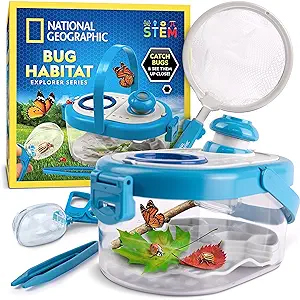
Bug Habitat Explorer Series – This bug catching kit includes everything kids need to catch and observe bugs in their natural state: habitat container and latching lid with magnified viewers and removable base, scissor-style bug catcher, net, and tweezers. The base provides a place for natural objects to make bugs feel at home while they’re observed.
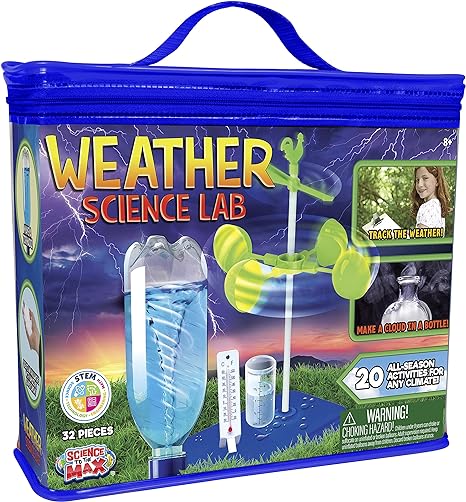
Weather Science Lab – Spark your child’s curiosity & imagination. This kit includes 20 all-season activities for all climates. It teaches kids meterology and covers a wide range of weather-related subjects, boosting their cognitive skills.
Some examples are Make A Cloud In The Bottle: Measure Temperature With A Real-Life Thermometer, Atmospheric Pressure With A Barometer, Keep Your Head In The Sky To Identify Clouds, and Create Fluffy Snow Without Freezing Temps.
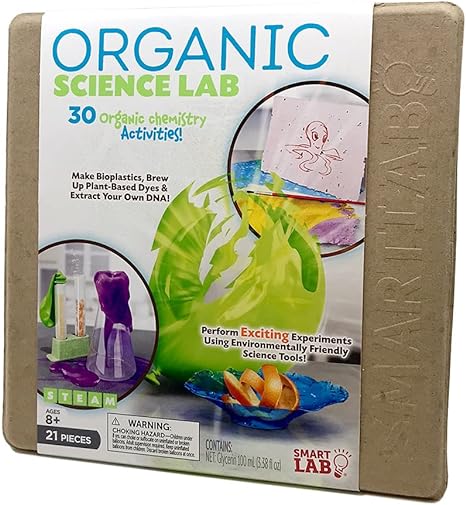
Organic Science Lab (Ages 8 and up) – 30 hands-on organic science experiments and crafts: Following the activity book’s step-by-step instructions, make your own earth-friendly slime, glue, bioplastics, paints and dyes, paper, and even candy wrappers while learning about transpiration, photosynthesis, greenhouse gases, polymers, DNA, acid-base reactions, the problems with petroleum-based plastics, and more
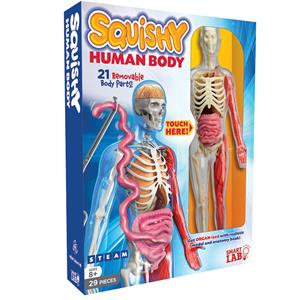
Squishy Human Body (ages 8 and up) – It’s time for a gut check! There’s a reason Squishy Human Body has been the best-selling anatomy toy for over 10 years — it’s Squishy! This 12-inch-tall interactive model features nine removable squishy organs that feel like the real thing.
Kids can squeeze the squishy heart and lungs, remove the squishy brain, and even uncoil the squishy intestines! Featuring 21 removable organs, bones, and muscles in a clear plastic shell, Squishy Human Body allows young doctors-in-training to dissect and rebuild the human body, again and again, using forceps and tweezers.
The handy organ-izer sheet keeps all the removable parts together for easy assembly. The stand allows kids to proudly display their assembled model on a shelf or desktop. The illustrated 24-page book takes a light-hearted approach to anatomy by following a slice of pizza as it travels through the body and interacts with different organs.
The book features photos of real organs, engaging illustrations, and answers to common body function questions — even the gross ones!
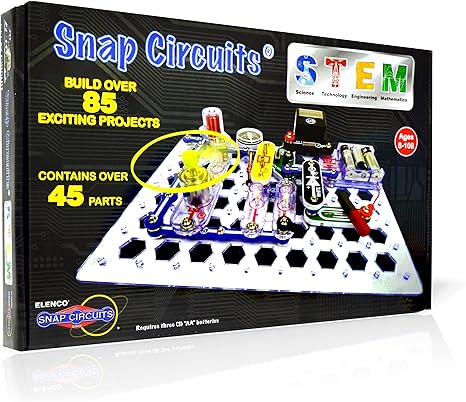
Snap Circuits Electronics Discovery Kit (ages 8 and up) – COMPLETE over 85 thought provoking projects exploring electricity, electronics and magnetism with 45+ Snap Modules. INCLUDES meter, electromagnet, motor, lamps, switches, fan, compass, and electrodes. No tools or soldering required. The components snap into place. My sons used to love these!
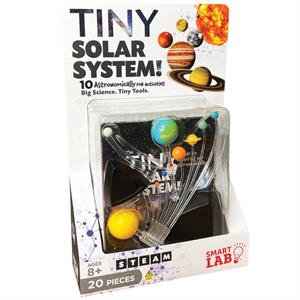
Tiny Solar System (ages 8 and up) – Bring the wonder of the universe to your child’s room! This 20-piece miniature solar system model with a light-up sun gives young astronomers an out-of-this world experience! The separate Earth-and-Moon model shows day and night, the phases of the moon, Earth’s seasons, and solar and lunar eclipses.
Ten interactive activities include mapping out a scale model of the solar system, making impact meteors, demonstrating eclipses, and creating art using the Sun’s UV rays. A colorful mega-mini poster brings the solar system to your bedroom wall!
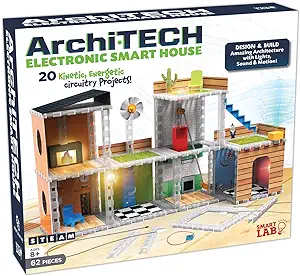
ArchiTECH Electronic Smart House (ages 8 and up) – Arm your house with sensors and a burglar alarm! Make an escape through an electronic trapdoor! Wire up an elevator, electronic drawbridge, and house-to-house tramway!
This cool construction kit lets you design houses with lights, sensors, sounds, and moving parts. With a combination of construction pieces and electronic circuitry components, Archi-TECH Electronic Smart House teaches creative engineering and technology in a whole new way.
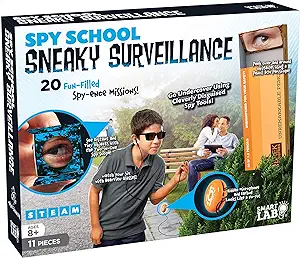
Spy School Sneaky Surveillance (ages 8 and up) – Get ready to get sneaky! This science kit gives you the tools and tips you need to learn how to be a master spy—but it doesn’t take itself too seriously. The cleverly disguised decoy box contains cool spy tools, including a spy-decoder periscope (disguised as a pencil box), a microphone (disguised as a yo-yo), rear-view spy glasses, collapsible spy binoculars, a magnifying loupe, signal mirrors, a Masked viewing prop (holes in the back of the book to spy through), and a hilarious in-world book with SPY missions and challenges to test your skills.
Kids will have a blast using the periscope to stake out and covertly observe the happenings in their home, using their magi-scope to read micro printing on money, tailing a friend from the front with their Rear View glasses, writing secret code messages to their spy partner with the Caesar Cipher built into the periscope, and more.
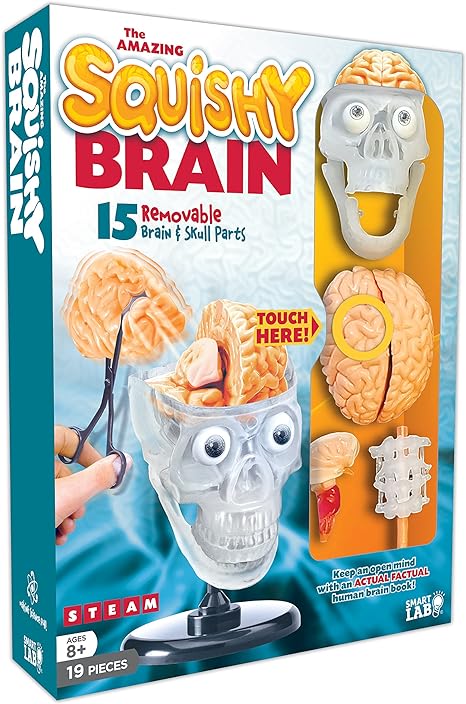
Squishy Brain (ages 8 and up) – Build a brain and then pick it apart with this sequel to our best-seller—the Squishy Human Body. This anatomically correct model, complete with moving mandible (jawbone) and squishy plastic brain and eyes, makes for a realistic experience of our body’s gray matter.
If you think about it, it’s really a no brainer! Read all about it! Kids get ahead of the pack by taking them on a tour through the sense, movement, memory, emotion, decision-making, and automatic functions like breathing and digestion. Phenomena like brain freeze and notes on how and when things go wrong are also explored.
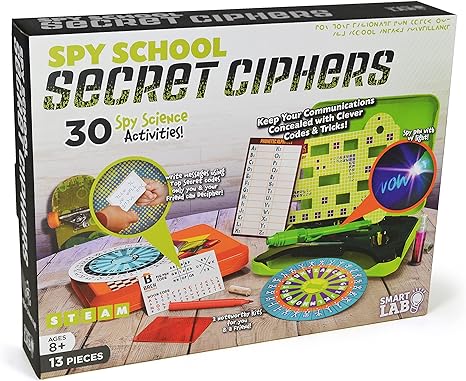
Spy School Secret Ciphers (ages 8 and up) – Immersive intro to cryptography: Enter the fictional BREK Industries Spy School of Secret Ciphers, where kids use science to hide—and reveal—messages and learn to encode and decode information using codes and ciphers; the humorous illustrated instruction book provides guidance on ethical espionage.
These are just a few of the many amazing STEM toys that are available. I have an even more extensive list of fun learning toys here.
Technology also plays a crucial role in STEM education, as it provides tools and resources for students to learn about and engage with STEM concepts in new and innovative ways. It can simulate scientific experiments, model engineering designs, or analyze mathematical data.
It can also provide access to online resources, such as educational videos or interactive simulations, that can help students deepen their understanding of STEM subjects.
By focusing on the process of learning and problem-solving, rather than just the outcome, children can develop a sense of confidence and mastery in STEM subjects. Providing opportunities for hands-on learning and exploration, such as through STEM toys, experiments, or maker spaces, can help children see the fun and creative aspects of STEM education.
By providing positive experiences with STEM subjects, parents can help their children develop an interest and confidence to pursue STEM careers.


